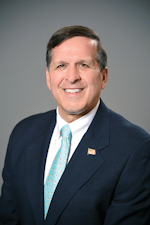The first two articles in this series looked at key principles that allowed practices to move into the top 10%. This third and final installment discusses some softer, less numbers-based ideas. These “softer” principles are harder to quantify; however, they are based on 30 years of interviews, analysis, and observation focused on how maximizing practice production allows practices to move into the top 10%.
A strong and recognizable culture
There’s extensive content available on the subject of leadership in dental literature. Unfortunately, it’s all over the place. Leadership has become a hypercomplex topic that’s almost impossible for anyone to master. When we examined this topic in our ongoing analysis of top 10% practices, we found that the leaders in these practices had a wide range of personalities. Some were extreme extroverts and others were introverts. Some were more charismatic while others were more matter-of-fact. We did not find one personality type that defined the leadership style of dentists who were able to move their practices into the top 10%.
Part 1 in this series: Takeaways from top dental practices: It's not about superstars
Part 2 in this series: Takeaways from top dental practices: Strong hires, low patient attrition, controlled overhead
What we did consistently find was that the leaders of top 10% practices built a strong and recognizable culture by following basic leadership principles. First, these leaders established a practice mission and mission statement early on, which they truly believed in and lived out each day. These doctors didn’t view their mission statement as just a public relations blurb that looked nice on the practice website. Instead, it became the DNA of the practice, woven into all procedures and communicated to the team regularly. The mission statement was prominently displayed in the office, the team had a firm understanding of it, and it was discussed in numerous settings ranging from morning meetings to monthly staff meetings.
A solid mission statement gave dental teams a sense of purpose for coming to work each day beyond just collecting a paycheck and created an environment where people felt they belonged to something bigger than themselves. This may be one of the key reasons that teamwork was so powerful in these practices. It wasn’t due to a lucky hire or two, but a deliberate act of shaping the practice culture day after day.
Commitment to core values
The second commonality we found among the leaders of top 10% performing practices was a strong commitment to a set of core values. Most of these practices had a highly visible list of nonnegotiable core values that governed daily operations. Many top practices had core values prominently listed in the staff room and often discussed them in meetings or other communication. Practices were proud to adhere to the core values as part of their day-to-day belief systems.
Strong communication
The third powerful leadership factor we found that these practices had in common was excellent communication. Because they made communication a priority, these practices didn’t suffer from communication breakdowns, gossip, or inefficiency caused by misunderstanding. Communication within top practices was very clear, and the doctors tended to be transparent with the team, providing realistic information about the practice at any given time. Most importantly, practice systems were designed to ensure that the flow of communication was not only efficient, but accurate. This allowed practices to function optimally with few mistakes and minimal need to correct inaccurate information provided to team members or patients. Increased efficiency increases available time, decreases stress and frustration, makes it easier for all team members to do their jobs, and helps create a better customer service environment.
Operational delegation
Like most dentists, those currently in the top 10% started out either by opening a practice as a start-up or by purchasing an established practice. This means that in addition to treating patients, the dentist also assumes the role of managing everything in the practice. However, there comes a point in every practice when the dentist can no longer be both the clinician and chief operations officer. When two dentists are partners, there’s typically one person who focuses more on practice operations, but as the practice grows, either that doctor must decrease clinical hours to focus on operations or operations will begin to stagnate. Most practices that reach this point and don’t hire an office manager to accept operational delegation will begin to plateau.
Conversely, top 10% practices run on a high level of delegation, and usually, at the right time, they hire an office manager. However, they don’t make the mistake of simply promoting a long-term team member into the position regardless of qualifications. Although many of the office managers in top practices were promoted from within, they were given increased responsibility over time as they mastered different tasks and skills.
Effective office managers operate like a chief operating officer with responsibility for administration, management, finances, staffing, and more. They also become the buffer between the doctor and the staff, so they must be skilled at managing up and down. Team members in top practices gradually learn that the office manager has full authority and that they should bring their thoughts, ideas, or complaints to the office manager, not the doctor. The office manager is then responsible for either solving the issue or bringing it to the doctor’s attention. The presence of a skilled office manager is consistent across the majority of top 10% performing practices.
It’s worth mentioning that in most top 10% performing practices, the doctor still stays very involved in the practice. Most are very knowledgeable about the performance levels of their practice and have an excellent understanding of the key metrics or targets that need to be monitored daily, weekly, and monthly.
Strategic planning
Another important characteristic of top 10% performing practice leaders is that they tend to be planners. One doctor we met reached into his desk and pulled out a binder showing his five-year plan year-by-year. It was detailed down to the steps needed to enact each level of the plan, who was responsible, and the deadline. It’s not a coincidence that this is how excellent businesses are built. Top 10% performing practices focus on their goals. Some doctors we spoke with even had long-term plans for 20 years into the future or more, including a potential exit strategy.
Many of these practices undertake a formal strategic planning process. In fact, we have had the opportunity to work with several of them in strategic planning meetings and experienced a high level of engagement among doctors, office managers, and other key individuals. In one case, a three-doctor practice even invited their attorney and accountant to participate in the strategic planning process based on what they felt they could contribute.
A key part of how the top 10% approach planning is that they update their strategic plan annually. We believe, as does the business world, that this is one of the most powerful ways to ensure an excellent future. We noticed that many of these successful practices recovered very quickly from the COVID-19 shutdown because they had appropriate systems, competent team members, and well-organized plans already in place. They might not have been specifically prepared for a pandemic, but their focus on moving forward toward a well-planned future helped them to weather the crisis.
This aspect is what we would call “having a living plan.” There’s a joke in the business world about how businesses spend a fortune on strategic planning only to end up with a set of binders that sits on the shelf never to be looked at again. However, we found that these doctors have a sense of where they want to go, they document it, and then move forward. They periodically review their plans to determine if they’re on track or if modifications are needed.
Series summary
In this three-part series based on a 30-year study of top 10% performing practices, there were several principles that became evident, including:
- Top 10% performing practices did not get there overnight. They average approximately seven years to enter the top 10% with some taking 15 years or more.
- Once top 10% practices enter the top 10%, they tend to stay there.
- Top 10% practices have higher staff longevity, which contributes to higher levels of efficiency, teamwork, and camaraderie.
- Top 10% performing practices have an established set of key performance indicators that they are fanatical about tracking. When a key performance indicator is missed, they make the necessary changes or modifications to improve performance.
- Top 10% performing practices deliver high-quality customer service, regardless of whether the practice is heavily insurance-based or fee-for-service.
- Top 10% performing practices have a patient base two-to-three times larger than most other practices. This higher level of patient longevity is due to an attrition rate that amounts to approximately half that of most other practices.
- Top 10% performing practices do not spend a lot on marketing programs. They typically focus on internal marketing and customer service to maintain a steady stream of referrals.
- Top 10% dentists do not typically have superstar capabilities. There are exceptions, but most top dentists simply use trial and error, education, and advisors to help them move in the desired direction.
The principles examined in this series can help any practice improve performance and production; it is merely a matter of learning from what the best are doing. Hopefully this series provided a few takeaways to help you build your own top 10% dental practice.
Editor's note: Originally posted in 2021 and updated regularly







